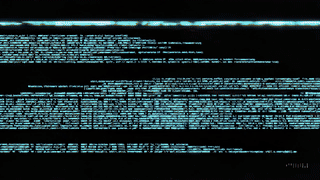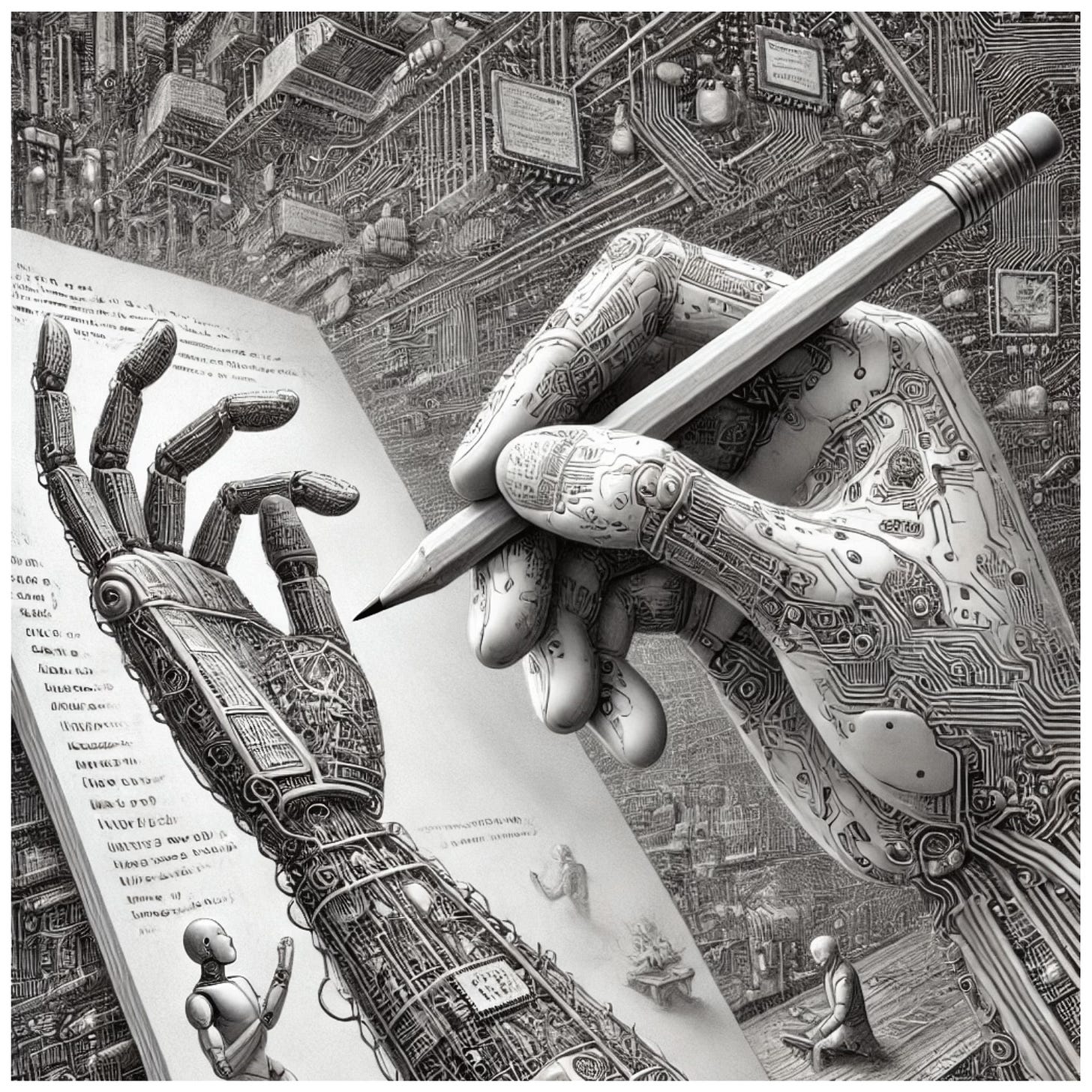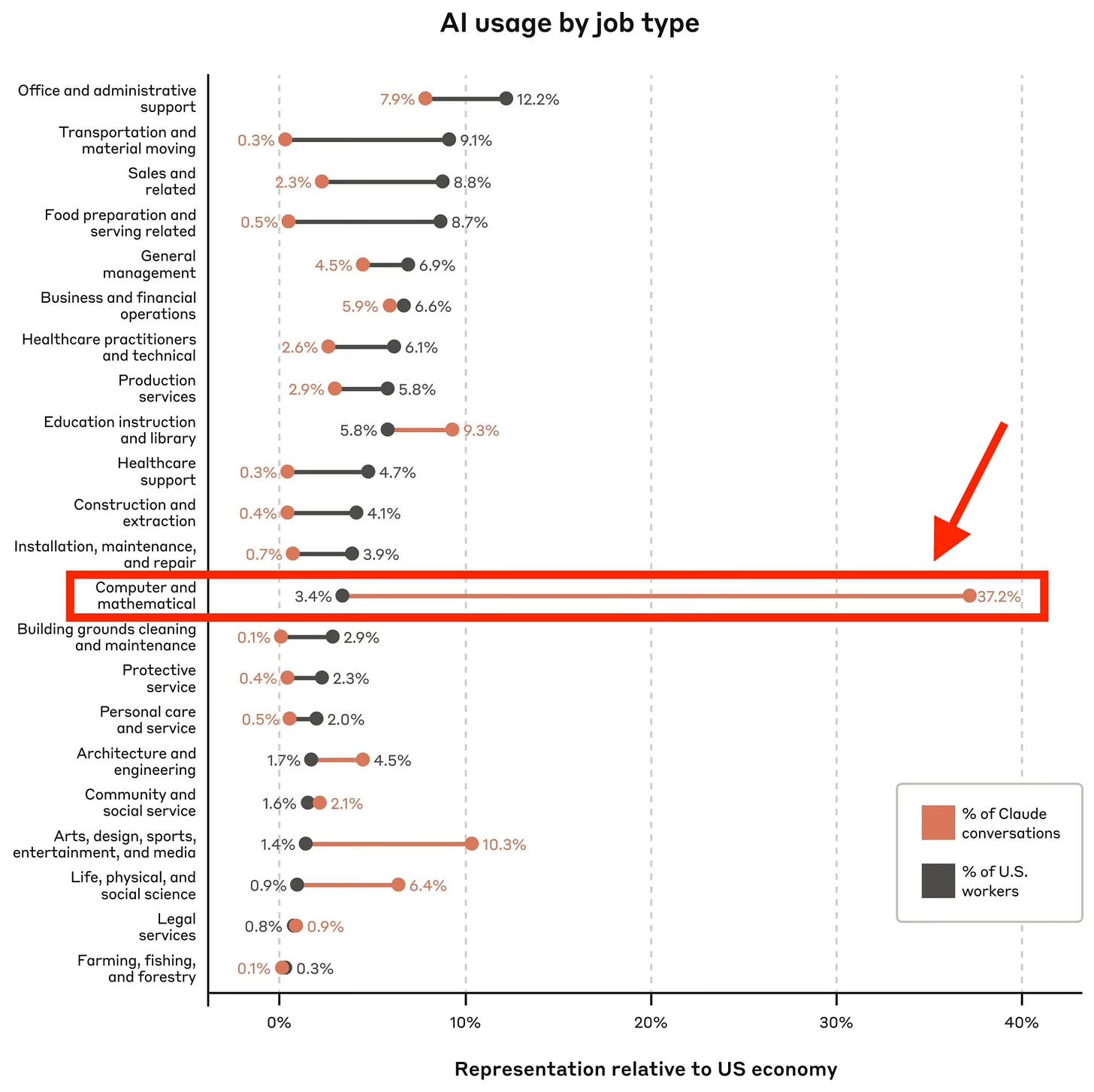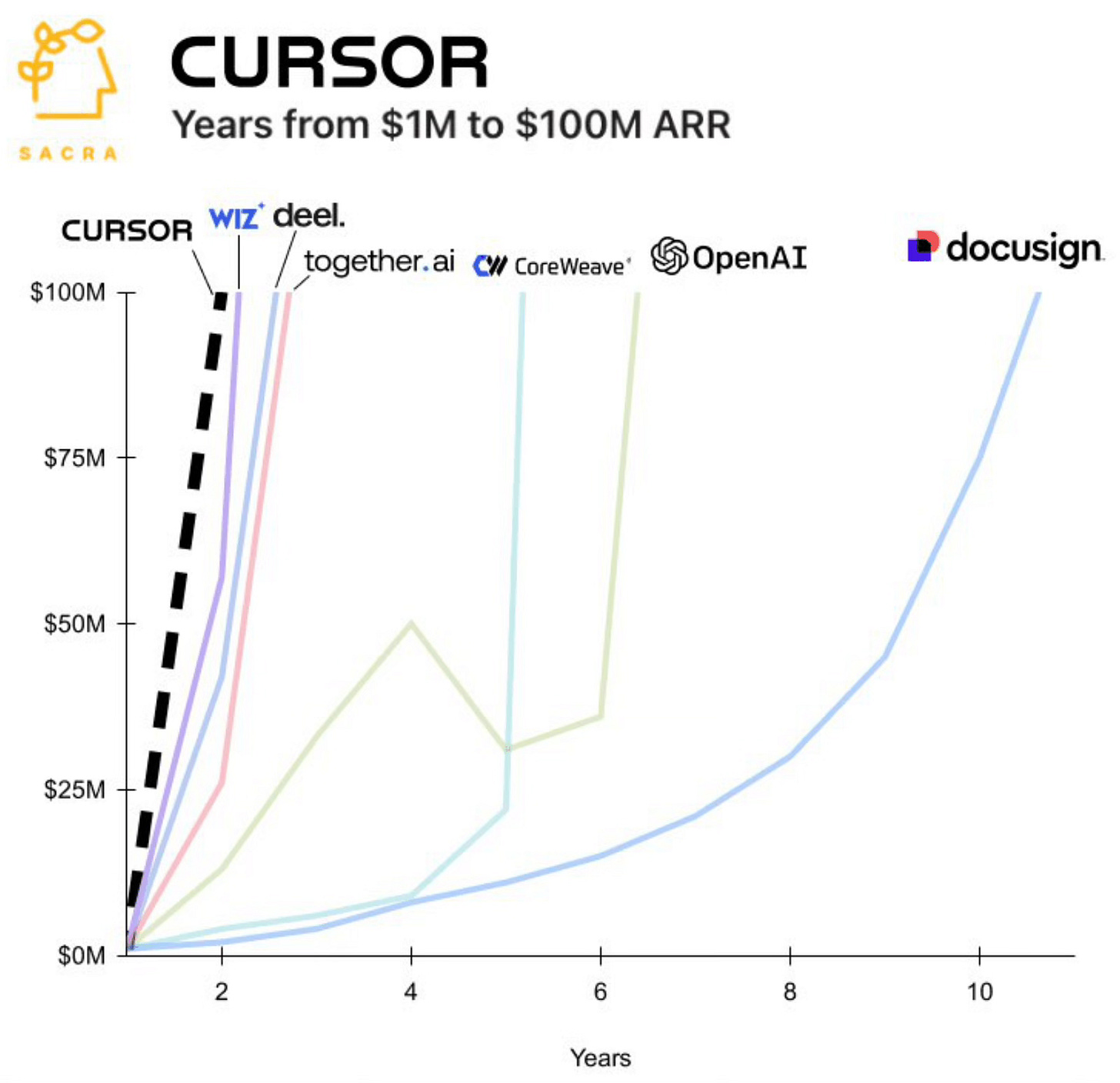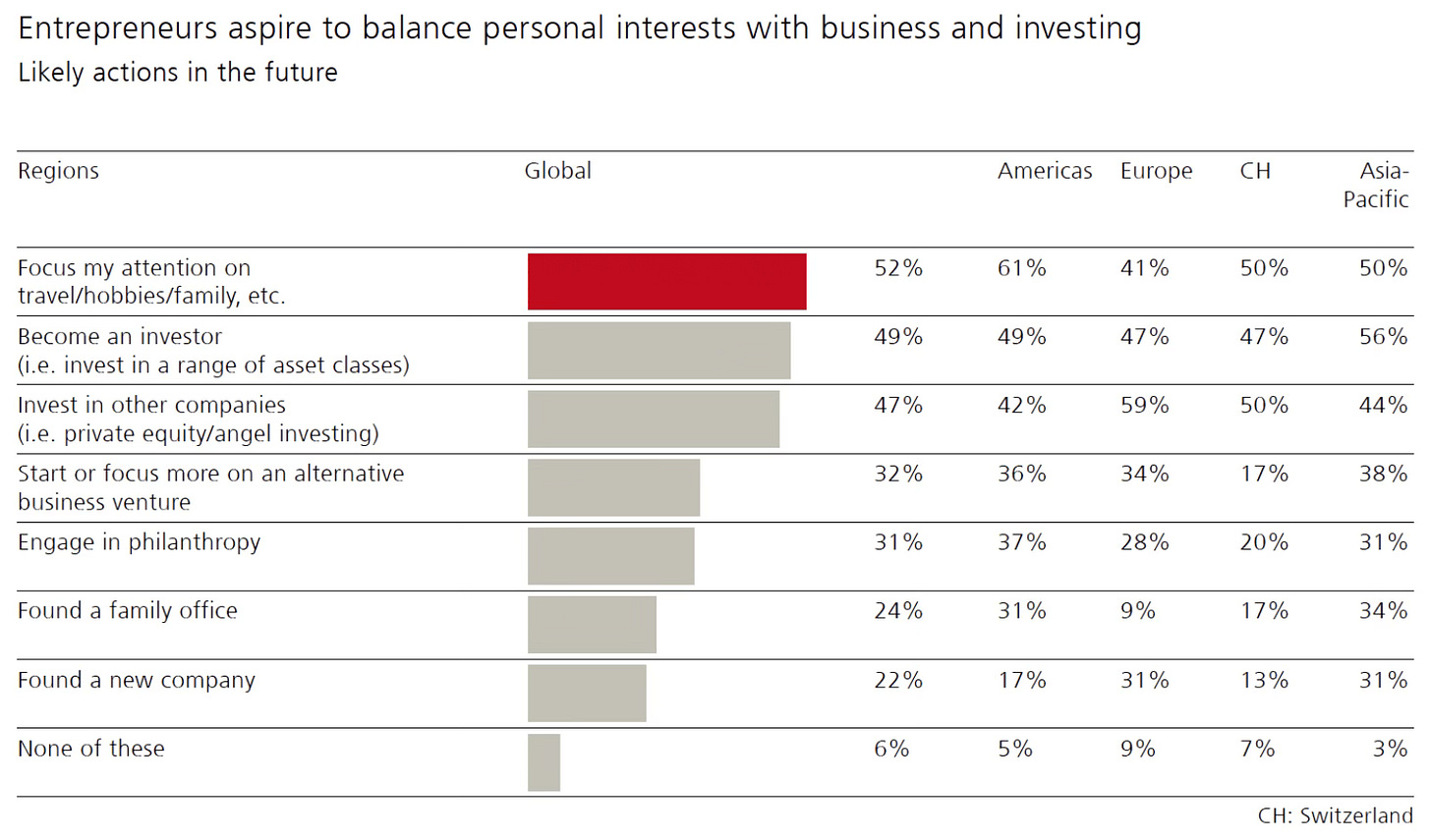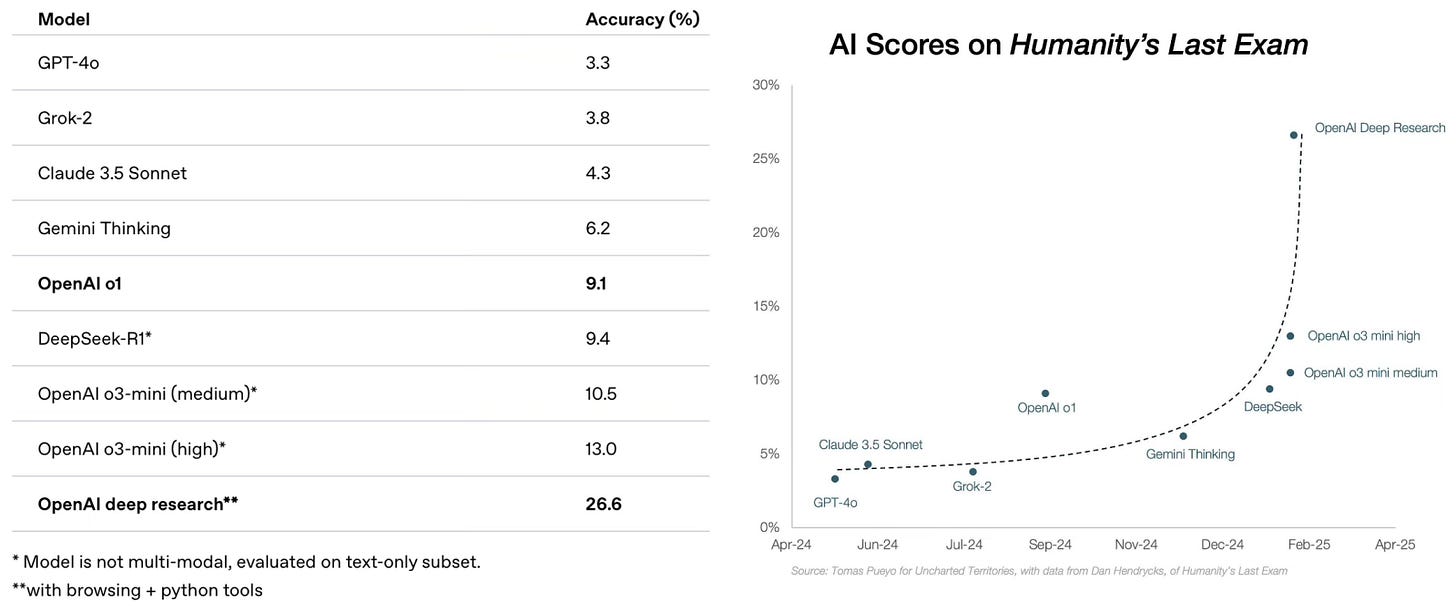Binary Circuit - February 14, 2025
Your weekly guide to most important developments in technological world
Binary Circuit investigates trends, technology, and how organizations might profit from rapid innovation. GreenLight, brain behind Binary Circuit, finds possibilities, analyzes challenges, and develops plans to fit and grow firms to stay ahead. Looking to scale your business, partners, or AI/technology integration, schedule a free discovery call:
Welcome to Binary Circuits’ 8th weekly edition
This week's must-know developments:
AI’s rapid improvement and wider penetration is rewriting the job profiles and business models. Is your business taking note?
AI is rapidly changing software development, with predictions that it will soon automate most coding tasks. How do you adapt or leverage the change?
AI's ability to handle complex thinking reflected in improving score on “Humanity’s Last Exam” suggests the technology will be able to perform complex roles. Business agility is important.
Workplace burnout is becoming a significant concern. What can you do?
Let’s dive in!
AI Reinvents the Very Skill That Built the Digital Age—What’s Next?
Software development has been the pillar of the digital revolution for decades now. It changed whole sectors, started billion-dollar businesses, and was considered one of the safest professions. Parents in my generation in India, where I grew up, had one apparent wish for their kids: learn to code. It was the path to a reliable and sustainably successful career.
Now, generative AI (GAI) is challenging that assurance. AI is accelerating the rate of technical advancement itself. It is like a self-improving machine, constantly developing the instruments and enhancing its power. Think about the ramifications: software, which fueled the digital revolution, is now being rewritten by the revolution’s offspring.
AI replaces rather than just helps programmers (see section below). Early this year, Salesforce ceased recruiting software engineers. By the end of this year, Mark Zuckerberg predicts AI will be automating mid-level developers. Sam Altman pointed out that by the end of 2025, “software engineering is going to look very different.”
The rate of change is accelerating!
While technology has continually transformed sectors, GAI is increasing the rate of change itself rather than only providing another wave of invention. Once taking decades to develop, these events occur in months.
AI will thus think, decide, and strategize better than most experts, not only assisting professionals.
GAI is non-discriminatory! What sectors, occupations, and skills follow? The trend suggests that information processing, analysis, and creative problem-solving fields may be vulnerable.
Consider law, business, and research. DeepResearch, released by OpenAI and Google (yep, both firms named it the same), shows how research and analytics can be enhanced and reinvented. DeepResearch delivers market insights in minutes that would have cost thousands in consulting fees, beating financial analysts.
But it won’t stop there.
Reinvention is possible in science, engineering, architecture, and product development. AI is no longer only just executing instructions. It is developing solutions that humans would not have considered.
Agentic AI is a game changer. When aggregated in great numbers, AI agents—specialized in particular tasks—form a workflow that can challenge once-considered safe havens, impervious to the kind of automation we linked with factories and assembly lines. The agentic AI era is unfolding in front of us! (more on this next week).
What to make of it? The lesson is obvious for business owners: complacency is an existential risk. The new survival skills include adaptability, acceptance of change, and seeing the changes in technological turmoil. It’s about leveraging GAI, not denying it.
How can you incorporate these fast-developing innovations into your business activities? Think, how many roles and duties will be redefined or augmented by GAI?
The challenge is much higher for career aspirants. The skills you think are essential today could be outdated tomorrow. The secret is not just to study but also to develop adaptability, agility, critical thinking, and a lifetime passion for learning. Emphasize the incredible human abilities of imagination, empathy, and sophisticated problem-solving. These are the domains where, for now, at least, GAI finds it difficult to compete.The world is changing faster than ever before. Foundations are being shaken.
The question isn’t whether disruption is coming; it’s how we will respond. Will the tide carry us away, or will we be the architects of this new planet?
Generative AI is eating software development
Jensen Huang, CEO of NVIDIA, has argued since 2022 that AI will significantly reduce the need for coders. At the annual Abundance 360 Conference 2023, Emad Mostaque, then CEO of Stability AI, predicted that the world would not need software programmers within five years.
Late last year, a panel led by Dr. Peter Diamandis at the FII Summit concluded that software development going forward would be for people passionate about coding. The euphoria of software development being a highly paid skill set is no longer valid with the proliferation of capable generative AI (GAI).
More and more companies are proving this to be true. Google explicitly said that a quarter of all code at Google is AI-generated. GitHub’s Copilot, built on OpenAI’s models, now assists millions of developers, generating 30%–50% of new code in some workflows. Jensen Huang has repeatedly mentioned that NVIDIA’s software programmers and engineers now use AI assistants to help with programming and debugging software.
The Anthropic Economic Index report analyzed 4 million conversations with GAI assistant Claude to understand how the technology is used in the workforce. The study reveals the highest use for tasks in software engineering roles.
Among the GAI-first coding firms that have surfaced, Zencoder, Merly, Cosine, Tessl, and Poolside are all attempting to advance the field of generative coding. In fact, Cursor AI, a GAI-powered code editor, rose the fastest (roughly a year) to $100 million in annualized recurring revenue from $10 million in 2023.
Classic AI coding tools were like autocomplete on steroids, helping developers create cleaner code. The next generation, led by Cosine and Poolside, builds models that think like engineers with logic, reasoning, and creativity.
GAI tools create more than functional code. They analyze development workflows, fix errors, and reason through complex challenges to learn how software is developed.
The result? GAI is designing entire applications. Developers are becoming GAI supervisors.
At Cosine, engineers have been banned from using coding assistants except for their AI tool, Genie. They now spend less time writing code and more time reviewing AI-generated solutions.
This shift is already visible across the industry. Instead of manually coding, developers increasingly orchestrate AI models, feeding them high-level prompts and correcting outputs.
Analogy in perspective: This new workflow resembles ATM banking. Once, thousands of tellers manually processed transactions. Now, software automates the process, and humans only intervene when needed. The same pattern is now playing out in software engineering.
Companies will require fewer programmers and more AI-driven development specialists. Understanding how AI produces software will determine success, not coding.
What happens when GAI can code better than humans?
Please note that AI coding tools still need human monitoring. Though they can create accurate syntax, they sometimes fail at functional correctness—writing programs that perform what you intend.
However, companies like Zencoder and Poolside are making rapid progress to close this gap. GAI is being trained on software development thought processes and finished code.
Their approach? Give AI a breadcrumb trail—capturing human developers’ exact steps when solving problems.
Reinforcement learning is valuable in this context. AI coding models are developing and testing their code thousands of times per second, just like DeepMind’s AlphaZero learned chess and the game of Go by playing against itself.
Why does it matter?
An AI system could soon design a whole application from scratch, determining the architecture, coding the features, troubleshooting faults, and optimizing performance without human involvement.
What is the burnout epidemic, and what should you do about it as a business owner?
Entrepreneurship is credited with sparking innovation, creativity, and economic prosperity. Many people dream of starting from scratch and being their own boss, and governments encourage it. However, like everything, it also comes with a hidden cost—burnout.
Burnout is now a common problem impacting employees in modern society. Jennifer Moss explores the underlying reasons for this epidemic in her book, The Burnout Epidemic: The Rise of Chronic Stress and How We Can Fix It, stressing that conventional self-care benefits are inadequate remedies. Knowing about burnout and putting good plans in place to fight it inside your company is absolutely vital for business owners.
But what is burnout? How would you characterize it, and what are the symptoms?
Burnout is a psychological disorder distinguished by emotional tiredness, depersonalization, and a reduced sense of personal accomplishment. It’s a persistent condition of physical and emotional depletion, not only sporadic stress.
The symptoms are constant fatigue, negative attitude toward employment, poor professional performance, and even health conditions, including gastrointestinal problems or headaches. The timeliness of intervention depends on early recognition of these indicators.
Together with UBS Global Entrepreneur Report 2025 research, Moss’s work emphasizes the actual scope of the issue. According to a recent study, 34% of managers at small and medium enterprises reported burnout, and 87% of them have suffered from poor mental health.
Why is this thus occurring? Burnout transcends the person, as Moss underlines. Often, it results from a toxic workplace, high expectations, lack of control, and a disconnection from the purpose of the work. Constant pressure and an always-on culture help to explain why our job life seems meaningless.
The UBS Global Entrepreneur Report 2025 says entrepreneurs want to blend work and investing with personal interests. Moreover, half (52%) want to prioritize travel, hobbies, and family.
How can a business owner help prevent burnout among their staff?
The burnout epidemic is beyond the standard “self-care benefits.” Those are good but are only band-aid solutions on a far more severe cut.
These tactics are some things to give thought to:
Culture of psychological safety—establish an environment where staff members may express worries, stress, or workload without fear of consequences. Encourage honest communication and proactive feedback seeking.
Redefine success—question the always-on attitude. Does everyone really have to be available around the clock? Review success measures. Are you just present or producing satisfying results? According to UBS research, many business owners yearn for a better work-life balance; your staff certainly does.
Empowerment and autonomy—give staff members more influence over their work. People who feel they have agency are less prone to feeling overwhelmed and powerless.
Meaningful work—help employees relate to the overall cause they are working toward. Let them become part of the bigger picture. Guide them in seeing how their efforts support the objectives of the business. Work that feels significant is more enjoyable and less taxing.
Appropriate workloads and expectations—review your task often to ensure it is doable. As necessary, be ready to change goals and timeframes. Don’t exalt diligence.
Lead by example—you create the tone as a business owner. Give your health a top priority and show a good work ethic. Take pauses, disengage after work, and prioritize family and personal life.
Though it’s a significant problem, burnout is not insurmountable. Changing the emphasis from personal self-care to institutional reforms inside the company will help to produce a better, more engaged workforce. Not only is it the moral thing to do, but it also allows business to grow.
Chart of the Week:
Consider it—just last year, GAI grappled with sophisticated reasoning. Designed to test AI with the most challenging issues from law, philosophy, mathematics, and physics, a group of researchers developed Humanity’s Last Exam (HLE). The HLE consists of 3000 questions, spans various fields requiring diverse cognitive strengths, and challenges Nobel Prize-winning minds and those with Einstein-level IQs.
AI models achieved hardly more than 10% accuracy last year.
Fast forward to now: AI is currently scoring over 26%. If this trend continues, it may surpass human intelligence before the year ends.
Sound bites you should know:
Tesla’s self-driving fleet is now logging over a million miles per year—navigating complex private zones without human intervention. Is full FSD around the corner?
Amazon announced a capex of over $100 billion on AI in 2025 (up from $78 billion in 2024), primarily for AWS. One more example is that bets on increased AI demand will offset lower prices.
Elon Musk places a $97.4 billion bid for OpenAI’s assets. Sam Altman rejects. However, this could change its nonprofit valuation, pushing Sam Altman and investors to reconsider their AI for-profit investments.
Anthropic CEO Dario Amodei predicts AI will reach the intelligence of an entire nation within two years. Global governance is moving too slowly to keep up.
Perplexity Sonar, powered by chipmaker Cerebras, is challenging conventional web search with lightning-fast AI inference and superior answer quality. Google should pay attention!


